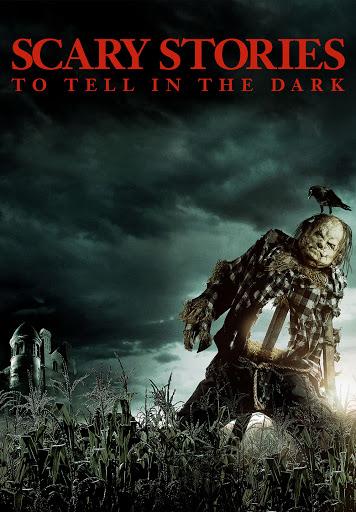Scary Stories to Tell in the Dark is a cinematic adaptation of the beloved anthology series by Alvin Schwartz, which has terrified generations of readers with its spine-tingling tales of the supernatural. The 2019 film, directed by André Øvredal and produced by Guillermo del Toro, brings to life some of these iconic stories, blending horror with a coming-of-age narrative that speaks to both fans of the books and newcomers to the franchise. But beyond the eerie tales, the movie also delves into the complex themes of fear, memory, and the battle between light and dark.

Plot Overview: A Haunted Town’s Dark Secrets
Set in the 1960s in the small town of Mill Valley, Scary Stories to Tell in the Dark follows a group of teenagers who stumble upon an old, mysterious book of scary stories. The book, however, is not a normal collection of eerie tales. As they begin reading it, they realize that the stories are alive—what is written in the book starts coming true, manifesting horrific creatures and events that threaten their lives.
The protagonists—Stella, Auggie, and Chuck—along with their new friend Ramon, are forced to confront these nightmarish creatures that seem to be drawn from the pages of the book. As the terror escalates, the teens must unravel the mystery of the book, uncovering its connection to the town’s dark past, while also trying to escape the horrors that seem to be closing in on them.
A Masterclass in Horror: The Visuals and Creatures
One of the film’s standout features is its masterful visual storytelling. The creatures that emerge from the stories are as disturbing as they are fascinating, each one embodying the eerie charm of the original illustrations by Stephen Gammell. From the ghostly Pale Lady to the terrifying Jangly Man, the film brings these creatures to life in haunting detail. The unsettling designs, combined with chilling practical effects and CGI, make the creatures feel like they are truly stepping out of the shadows.
The art direction and atmosphere also contribute to the film’s ominous tone. The town of Mill Valley, with its decaying buildings, misty forests, and dark, claustrophobic interiors, creates a perfect backdrop for the unfolding terror. The use of lighting and sound heightens the tension, making each scare feel all the more immediate and real.
Themes of Fear and Memory
Beyond the surface-level scares, Scary Stories to Tell in the Dark explores deeper psychological themes. The town’s haunted history is tied to a series of dark secrets, including unresolved trauma, guilt, and revenge. As the characters confront the supernatural, they must also face their own fears and past mistakes. Stella, for example, is haunted by the memory of her mother’s disappearance, while Ramon grapples with his own guilt related to his past.
The book serves as a conduit for these unresolved emotions, with the stories acting as metaphors for the characters’ inner turmoil. Each story is a reflection of their personal struggles, forcing them to confront what they fear most—whether it’s the physical threat of the creatures or the emotional weight of their past. The film subtly suggests that confronting and accepting one’s fears is necessary to overcome them, making the horror more than just a surface-level fright.
A Coming-of-Age Story Amidst Horror
What makes Scary Stories to Tell in the Dark particularly effective is its ability to combine horror with a coming-of-age narrative. The characters are not just fighting off supernatural threats; they are also dealing with the universal challenges of growing up—identity, friendship, and the struggle to understand their place in the world. This adds an emotional depth to the story, making the characters’ journey more relatable and their victories over fear more meaningful.
The bonds that form between Stella, Auggie, Chuck, and Ramon are central to the narrative. Their teamwork and loyalty provide a sense of hope amidst the chaos, reinforcing the idea that facing fear is something that is often easier when shared with others. This theme of unity and resilience is one of the most powerful aspects of the film.
Conclusion: A Modern Horror Classic
Scary Stories to Tell in the Dark is a captivating horror film that combines the essence of its literary origins with modern filmmaking techniques. It succeeds in creating an atmosphere of dread and intrigue, while also addressing deeper themes of fear, guilt, and coming of age. With its unsettling creatures, clever storytelling, and emotional depth, the film not only delivers scares but also offers a reflection on the power of facing one’s darkest fears.
While it may not be a traditional slasher film or a psychological thriller, Scary Stories to Tell in the Dark offers a unique, multifaceted horror experience that will leave audiences both terrified and introspective, reminding us that sometimes, the scariest stories are the ones that make us confront our own personal demons.





